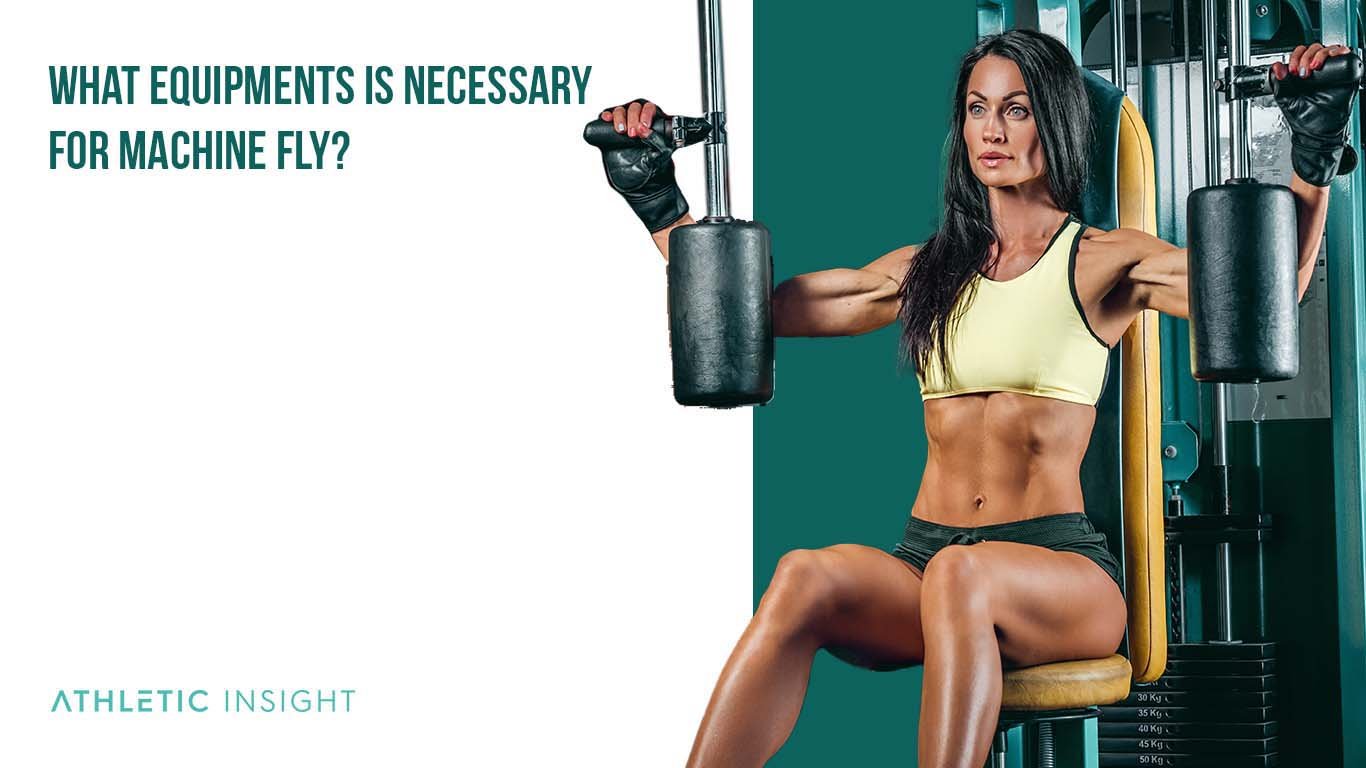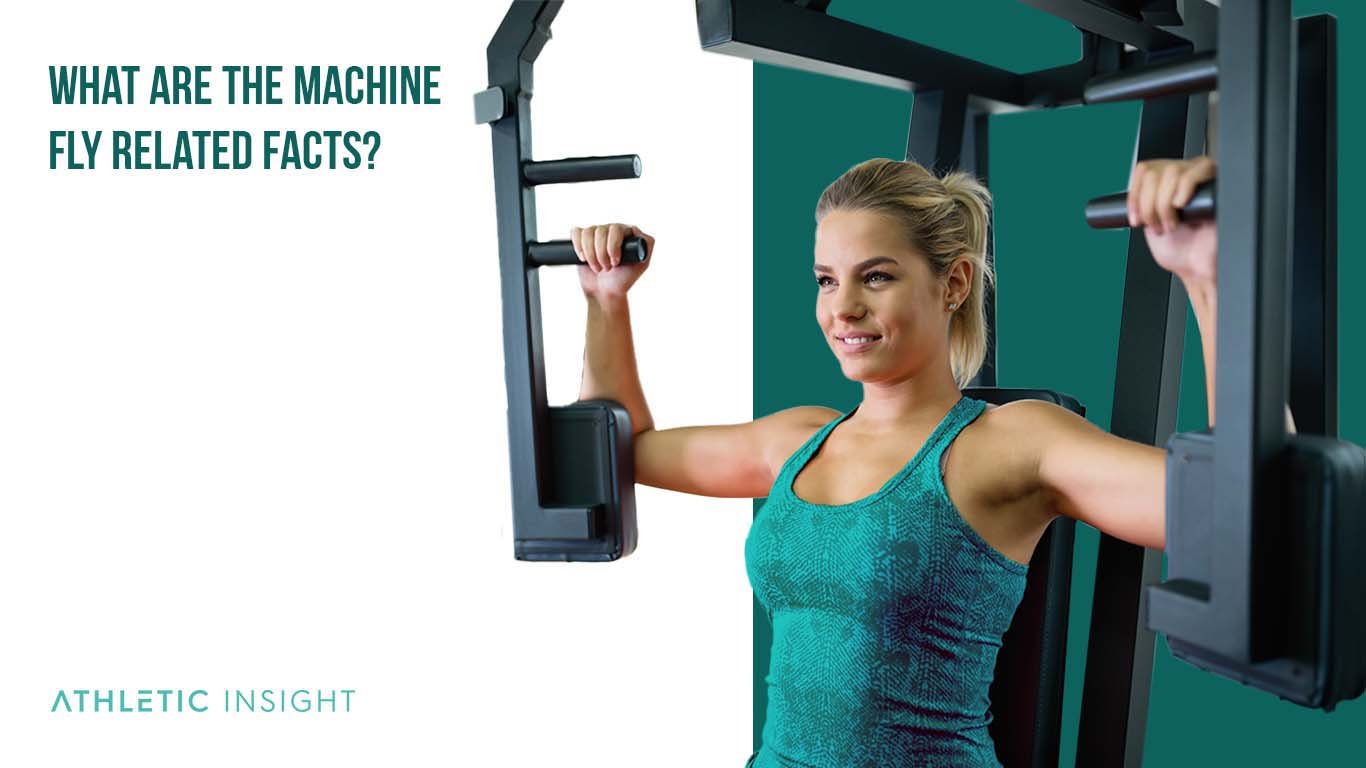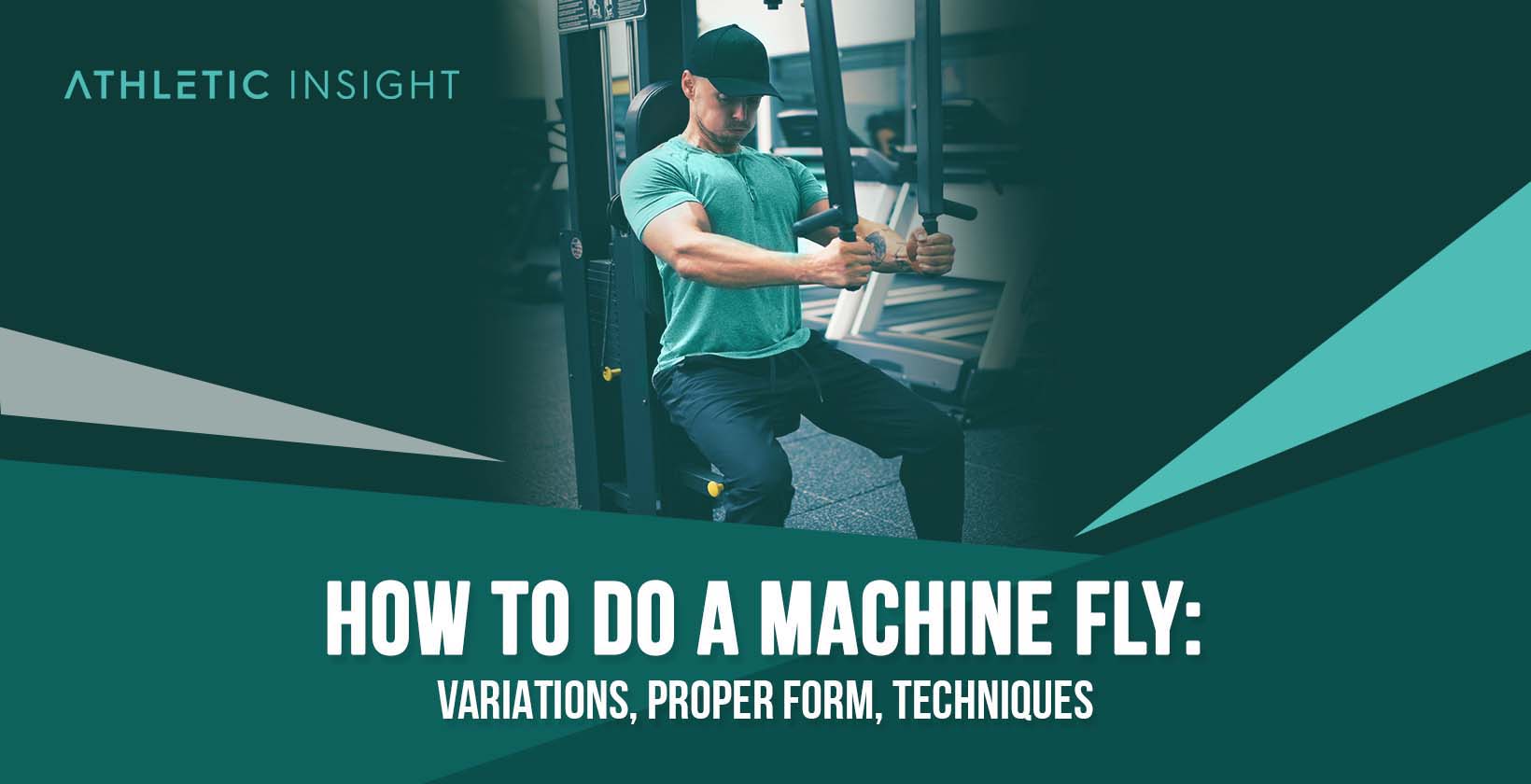The machine fly is a resistance strength training exercise focusing on the pectoral and anterior deltoid muscles. The machine aspect of this exercise (vs. free weight) allows the user to perform the exercise safely, putting no strain on the biceps and triceps.
The benefits of the machine fly compound lift are to build chest strength in the pectoral muscles, increase muscle mass by specific targeting of the chest muscles, and build deltoid muscles. If you are new to using free weights or exercising, the machine fly can be an effective way to practice good posture, control your chest and rib cage, and increase the range of motion at the shoulder joint.
The proper machine fly form includes adjusting the equipment to the correct height, sitting down with your feet on the floor and back supported on the pad, and keeping your elbows and wrists level at shoulder height.
The main machine fly types include an exercise where the user’s shoulders, elbows, and hands are on the same level. Another type of machine fly is where the user’s elbows bend at 90 degrees. The benefit of the second type of machine fly is that the user can increase their range of motion and target the outer pectoral muscles.
The most common machine fly mistakes to avoid are holding your breath during the exercise, using your legs to push the weight, arching your back, and using momentum to press the weight. Individuals can fix these mistakes by exhaling during the push motion of each rep, lowering the weight to avoid using their legs, maintaining good posture during the entire exercise, and using slow movements.
The most common injuries that occur with the improper form on the machine fly are an excess strain on the shoulders that can lead to rotator cuff injuries, lower back strain, and shoulder impingement syndrome. Proper form can remedy these common injuries by avoiding excess strain on the back and keeping the weight low enough to avoid shoulder stress.
How to Perform Machine Fly with Proper Form?
Performing the machine fly with correct form is essential to building muscle in your chest, strength in your shoulders, and avoiding stress/strain injuries. Proper form is the specific way of performing a chest exercise to prevent injury.
Understanding the correct way to set up the machine fly, how to position yourself in the machine, and how to perform the exercise safely can help you build muscle, increase your range of motion, and avoid injury.
- Sit on the machine for fly exercise.
- Keep your back flat on the pad.
- Hold each of the handles firmly in your hands.
- Bring the handles slowly together while squeezing your chest in the center.
- Return your arms to the beginning position as you do so.
- Take a deep breath in.
- Stretch the muscles in your chest.
- Inhale gently until and stretch your chest muscles fully.
- Repeat the number of reps in your exercise plan.
What Are the Benefits of Machine Fly?
There are many benefits of the machine fly when compared to other chest and shoulder-building exercises.
- Increase chest strength
- Muscle mass gain, particularly in pectoralis muscle – the machine fly primarily targets this muscle, which improves the range of motion and strength in the shoulder joints
- Improves strength with the daily task such as picking and lifting heavy objects
- Compound lift – increases muscle gain, boosts the number of calories burned per gym session, and makes your workout more efficient
- Opens and stretches the scapulas and shoulder blades for increased range of motion – develops scapular retraction to improve posture, strength, and stability while sitting
What Are the Common Mistakes for Machine Fly Form?
There are a few very common mistakes for the machine fly form that can ruin the exercise, lead to injury, and prevent muscle growth.
- Bending the elbows: Not keeping your arms straight during the machine fly can lead to excess pressure on the shoulder joint throughout the exercise
- Arching your back: Arching your back off of the back pad support can lead to lower back strain (erector spinae strain)
- Holding your breath: Not breathing during the machine fly exercise can cause unnecessary tension during the concentric portion of the lift
- Using your legs: Using your legs takes the focus of the exercise away from the upper body (pectorals and deltoids)
- Using momentum: Going too quickly through the exercise is poor machine fly form
Using a pristine machine fly form is essential to targeting the right muscle groups, avoiding injury, and staying safe while exercising alone in the gym.
How to Determine Proper Weight and Rep Count for Machine Fly?
Beginners should start with 2-3 sets of 12-15 reps for machine fly to learn proper technique and avoid injury. Once this becomes too easy and the last few reps are not a struggle, users can increase the weight by 5%.
Which Muscles Are Involved While Performing Machine Fly?
There are four main muscles used to perform the machine fly including the pectoralis major, shoulder blades, deltoids, serratus anterior.
- Pectoralis Major: Used to squeeze the weights during concentric motion
- Shoulder Blades: Opens the scapulas and blades
- Deltoids: Concentric motion
- Serratus anterior: Supports the lift
What Are the Machine Fly Alternatives?
Machine fly alternatives are exercises that the athlete can substitute to work for the same muscle groups.

- Burpee: Full-body compound lift and aerobic exercise that works the chest, triceps, quads
- Downward Dog: Lengthens the entire body (heels, calves, glutes, lower back, wrist, shoulders)
- Cable crossover: Targets pectoralis major, shoulders, back
- Swan Exercise: Pilates move that targets the back, abs, hamstrings, glutes
- Barbell bench press: Free weight compound lift that targets the pectoralis, deltoids, trapezius
- Standing Cable Decline Chest Fly: Machine exercise targeting chest and shoulders
- Tricep Dip: Bodyweight exercise that isolates the chest and triceps
- Dumbbell Bent Over: Improves posture, stabilization, core, and strengthens lats and traps
- Superman Exercise: Bodyweight exercise that strengthens the spinalis and iliocostalis
- Bicycle Crunches: Bodyweight exercise that targets the core
- Chin up: Bodyweight or assisted exercise that targets the biceps, latissimus dorsi, teres major, abdominis, and posterior deltoid
- Barbell Military Press: Compound exercise that targets the medial and anterior deltoids, trapezius, pectoralis, and scapular stabilizers
What Equipment Is Necessary for Machine Fly?
The machine fly requires the fly machine to perform the exercise properly.

What Are the Chest Muscle Exercises With Machine Fly?
The Machine Fly or Pec Deck Machine is primarily designed to target the pectoralis major and minor, the main muscles in your chest. The Machine Fly and the Single-Arm Machine Fly are a couple of chest exercises you can perform using this machine.
- Machine Flies or Pec Deck Flies
- Single-Arm Machine Flies
What are the shoulder muscle exercises with the Machine Fly?
The Machine Fly, also known as the Pec Deck Machine, is primarily designed to target the pectoralis major muscles in the chest. However, the posterior deltoids (the back part of your shoulder muscles) can also be engaged with the reverse machine fly exercise, which is one of the best shoulder exercises that one can perform.
What are the Machine Fly related facts?
- Using one side of the machine fly can work the stabilizer abdominal muscles
- Adjust the arm levers to ensure a full range of motion
- The seated structure of the machine fly helps the user focus on using chest muscles

Does Machine Fly affect the hormones?
Yes, the Machine fly is a compound lift that can boost anabolic hormones, such as testosterone, growth hormone, and insulin growth factor. Using heavy weights for the machine fly can increase the production of the insulin growth hormone to repair muscles.
Does Machine Fly Increase Testosterone?
Testosterone is a steroid hormone that increases male sexual characteristics. Compound lifts, like the machine fly, increase testosterone more so than isolated exercises.
Is Machine Fly a military movement?
No, the machine fly is not a military movement.
Is Machine Fly dangerous?
No, the machine fly is not dangerous with proper form, but improper technique, poor form, heavyweight, or lack of knowledge could lead to injury. Always consult a medical professional before starting a new exercise regime.
Is Machine Fly Essential?
Yes, the machine fly is essential in building shoulder and chest strength. This exercise is perfect for the athlete with access to gym equipment. Machine Fly offers effective resistance training for targeting chest and pectoral muscle groups. The activity is safe with proper warmup and form.



